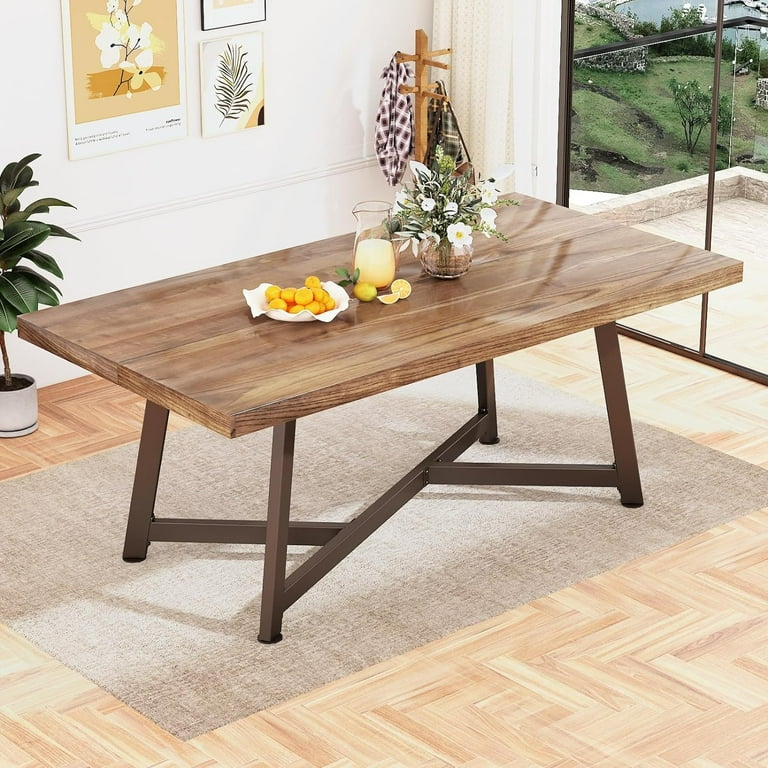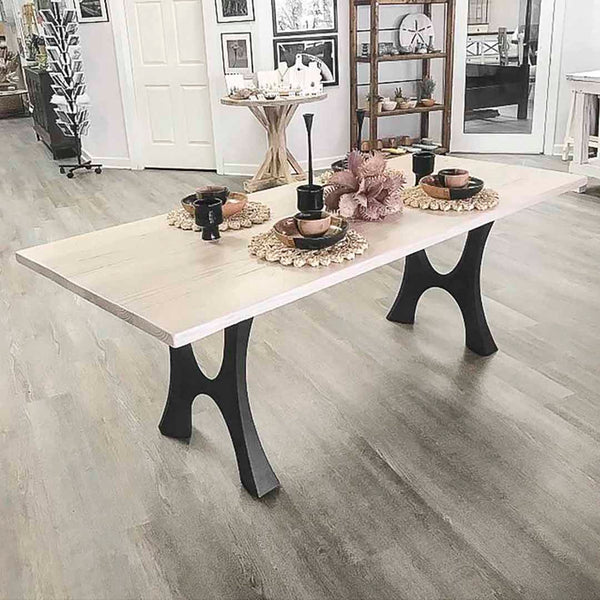Tips for Installing Dining Room Table Legs for a Modern Look
Tips for Installing Dining Room Table Legs for a Modern Look
Blog Article
From Standard to Modern: Find the Ideal Dining-room Table Legs for Your Design
While timeless designs such as cabriole and turned legs stimulate a sense of classic refinement, contemporary styles like hairpin and geometric alternatives offer a chance for striking visual passion. As you take into consideration these aspects, the inquiry remains: exactly how can you flawlessly incorporate these varied leg styles to develop a harmonious eating experience?
Comprehending Table Leg Styles
The selection of dining-room table leg designs can significantly influence both the appearances and capability of the space. Each leg style contributes one-of-a-kind aesthetic components and functional functions, dealing with diverse layout preferences and usage demands. Recognizing these designs is vital for selecting the appropriate table that lines up with your general interior decoration vision.
As an example, tapered legs offer a clean, classic appearance that can boost an area's sophistication, while pedestal bases supply stability and make the most of legroom, making them perfect for smaller sized areas. Hairpin legs, a characteristic of mid-century modern-day style, present a commercial panache, permitting an airy, open feel. Similarly, trestle legs evoke rustic charm, supplying durable support and a feeling of eternity.
In addition, the option of products plays a considerable function. Wood legs can bring heat and structure, whereas metal options often communicate a streamlined, contemporary vibe. Ultimately, understanding table leg designs is essential for creating a cohesive dining location that shows individual design while guaranteeing practicality and comfort. By thoughtfully taking into consideration these elements, you can enhance both the aesthetic and practical charm of your dining space.
Conventional Table Leg Options
When choosing dining area table legs, traditional options usually symbolize timeless elegance and workmanship. These designs mirror a rich heritage and a dedication to top quality, making them ideal for those that appreciate timeless appearances.
Among one of the most legendary conventional leg designs is the cabriole leg, characterized by its graceful curved shape. This layout frequently features ornamental carvings and is most typically located in Queen Anne and Chippendale furnishings. An additional prominent alternative is the turned leg, which boasts a collection of smooth, rounded forms that offer a classic appearance while maintaining stability.
In addition, the straight leg, while simple, uses a unadorned and durable structure that can mix seamlessly with a selection of tabletop designs. For those attracted to ornate outlining, claw-and-ball feet legs evoke a feeling of splendour and can work as a sensational centerpiece in any kind of eating room.
Finally, stand bases, although not purely legs, give an alternate typical choice that enables for sufficient legroom and can be wonderfully carved. Each of these conventional leg designs adds to the general atmosphere of a dining-room, marrying function with aesthetic appeal.

Modern Table Leg Designs
Modern go to website table leg styles offer a diverse series of styles that emphasize tidy lines and innovative products. These designs often prioritize functionality while acting as striking prime focus within an eating space. Minimal visual appeals prevail, with legs crafted from materials such as steel, glass, and crafted timber, which add to a contemporary and airy feel.
One preferred style is the hairpin leg, characterized by its slim, conical framework that provides stability without overwhelming the tabletop (dining room table legs). This design is commonly discovered in mid-century modern furnishings and can easily enhance various table shapes. An additional fad is using geometric shapes, where legs may take on asymmetrical or angular forms, adding visual passion and a touch of artistry

Blending Styles for Distinct Spaces
Frequently, house owners look for to produce unique dining areas that show their individual style by mixing various design aspects. This method permits for the consolidation of varied looks, leading to a harmonious yet distinct setting. Pairing a rustic wood table with sleek, contemporary steel legs can produce a distinctive contrast that boosts the space's general allure.
Furthermore, incorporating vintage table legs with modern table tops can evoke a feeling of background while maintaining a modern-day sensibility. Such combinations not just display individual taste however also motivate creativity, allowing house owners to curate a space that really feels both individual and welcoming.
Color plays an important helpful site duty in this blending process; selecting table legs that match or contrast with the existing color pattern can enhance visual rate of interest. Whitewashed legs can soften the daring of a dark table surface area, producing a well balanced aesthetic.
Tips for Picking the Right Legs
Picking the right table legs is crucial for accomplishing both performance and browse around here visual allure in your dining space. Begin by considering the total style of your room. Conventional settings take advantage of legs that feature elaborate carvings or transformed layouts, while modern spaces may require sleek, minimalist styles.
Next, analyze the elevation and security of the legs. dining room table legs. Basic table vary between 28 to 30 inches in height, so guarantee the legs match this measurement for comfort. In addition, durable products, such as hardwood or steel, can boost security and long life
Examine the leg shape also-- alternatives include directly, tapered, or stand layouts. Straight legs offer a timeless appearance, while tapered legs can add a touch of elegance. Pedestal bases provide enough legroom and are excellent for smaller areas.
Conclusion
In recap, selecting the excellent eating space table legs requires cautious consideration of both contemporary and conventional designs. By balancing leg design, elevation, and material with the overall decoration, a cohesive and welcoming ambience can be accomplished.
The range of dining space table leg designs can substantially affect both the looks and capability of the room. Inevitably, recognizing table leg styles is essential for creating a cohesive eating location that shows personal design while ensuring usefulness and comfort.One of the most iconic traditional leg styles is the cabriole leg, identified by its stylish bent shape. Straight legs use a traditional look, while conical legs can add a touch of style.In summary, selecting the excellent eating space table legs needs cautious consideration of both typical and modern designs.
Report this page